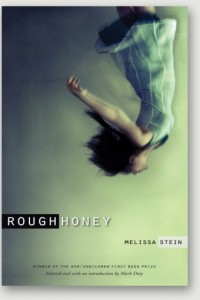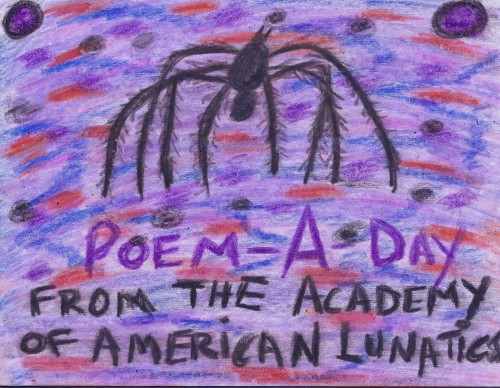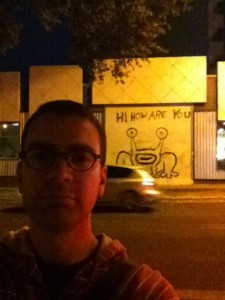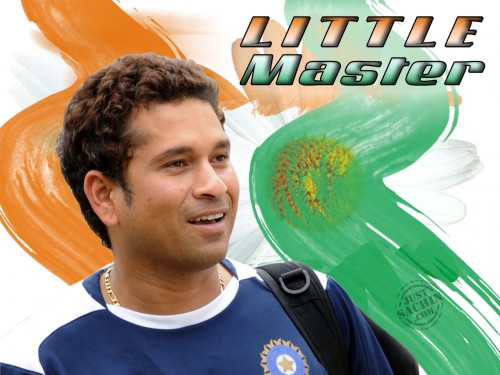Some Unscientific Thoughts on Depression
 Depression is a different animal entirely. For the depressed person, the bulk of precedents—be they figures one admires that also dealt with depression, or works that seem to encapsulate the modern understanding of this phenomenon—have occurred in the last hundred years or so; and although it’s not difficult to develop a strong empathy for depressed figures like Lincoln, Nietzsche, or Albrecht Dürer, the lines of history tend to blur and complicate personal afflictions to such an extent that for every book that might exist exploring the various miserable icons we’ve had, there are hundreds documenting their triumphs and love affairs to bury these desired texts neath the fantastical self help mega library.
Depression is a different animal entirely. For the depressed person, the bulk of precedents—be they figures one admires that also dealt with depression, or works that seem to encapsulate the modern understanding of this phenomenon—have occurred in the last hundred years or so; and although it’s not difficult to develop a strong empathy for depressed figures like Lincoln, Nietzsche, or Albrecht Dürer, the lines of history tend to blur and complicate personal afflictions to such an extent that for every book that might exist exploring the various miserable icons we’ve had, there are hundreds documenting their triumphs and love affairs to bury these desired texts neath the fantastical self help mega library.
TWO FEASIBLE PRECEDENTS

The first, and perhaps most obvious best friend to the depressed person post-1995 who happens to enjoy literature, is probably David Foster Wallace. Before him, the aforesaid lines of history tend to make the case of Sylvia Plath or Van Gogh fairly cut and dry, to the extent that Plath’s life might be seen as her sitting down at a desk and writing some beautiful works, then immediately falling into such a vat of misery that she stuck her head in an oven, the same model largely applies for Van Gogh except it’s paint, with a bit of ear-severing—though not as drastic as history has made it out to be—and the man shooting himself in the heart twice before walking back into the city undead, only to die two days later. With Wallace, however, we have an accomplished intellect who came to suffer severely from depression after the road had begun to be mapped out for him. Already well into his college career—and of course you can argue that his depressive tendency existed before this, but as I understand it this was when Wallace really came to blows with the malady—he seemed destined for literary accomplishment before being thrust into the void of chemical dissonance and thus forced to consider contemporary (this is important) means of salving the indiscernible wound. And, luckily for us, he managed to write some of the most fascinating fiction and non- about the subject to happen in years. This is a curious thing to me. For all the talk I’ve heard of Wallace’s mastery over the contemporary form, or something, I seldom hear discussed his great command over the subject of fucking misery, modern boredom, or complete and total suicidal ideation. I guess it’s hinted at much of the time, but as far as I’m concerned the guy is close to our American Foucault as it relates to the depressive animal, with “Good Old Neon” or the Kate Gompert portions of Infinite Jest—perhaps my favorite in the whole book, weirdly enough—or Wallace’s nonfiction and more—the subject tends to permeate everything as far as I’ve gathered—what we have in Wallace is a guide for the solving of the plight described by Scott Fitzgerald years prior to this, that “the natural state of the sentient adult is a qualified unhappiness.” For more on this I highly recommend Postitbreakup’s fairly recent post for Dennis Cooper’s blog, “David Foster Wallace’s triptych on depression.” READ MORE >
Mass Effect and The Self-Imposed Strictures of Interactive Storytelling

In an era of broad canonical redefinition, when more and more previously marginalized forms, from comic books to slash fiction, are receiving the literary attention they have always deserved, one storytelling medium remains stubbornly difficult for anyone, even its devotees, to take too seriously. That medium is gaming, and I’m afraid that it’s all my fault.
I am a gamer. I have, admittedly, much more passion reserved for gaming’s potential, its Platonic ideal, than for any of its present, more or less imperfect incarnations. Sadly, my attitude toward such an ideal waxes cynical of late. Ten years ago, electronic gaming was just starting to emerge from its reflex-test swaddling clothes and make faltering baby steps in a dozen directions exciting new directions, each a distant promise of something previously unseen in the world of art and literature. Today, the bloated man-child of mainstream gaming has all but sunk into a quagmire of the same stories repeated like a tattoo, with more flash and less substance as each year passes, as the intersection of “game” and “story” becomes increasingly cemented in a model that leaves little room for the kind of progressive storytelling originally promised. Its syntax, the language of player interaction in which its message is couched, has become lazy and predictable. The once promising child’s development may be permanently arrested, and I, as a gamer, am to blame.
In a McCluhanian nod, that syntax, rather than the literal story being told, is the true carrier of gaming’s message. It’s the push-pull between the intentionality of the game designer, as expressed in the structure (digital or physical) presented to the player as “game,” and the player’s own investment and empowerment within the narrative. It is, in many ways, a revival of the call-and-response communal storytelling of folklore and early theater, except that, in a gleefully postmodern twist, the storyteller hopped a jet out of town months before the audience even arrived. The “story” is the sealed and packaged structure left behind, its white spaces carefully measured, the player’s responses anticipated and, in many cases, artfully curtailed. The syntax encompasses both the (always limited) means by which the player is allowed to respond to the piece—say, by rotating the camera, jumping, pulling levers, pushing boxes, et cetera—and the degree to which the storyteller has correctly anticipated, and provided appropriate responses to, the player’s interactions. Games that employ the same syntax cannot help but deliver the same message, over and over, no matter what the “story” appears to be on the surface.
Critically, the syntax is always imperfect (otherwise, the game would be a perfect simulation of real life, which would negate the game designer’s authorial intentionality and, in any case, be unplayably boring). A great deal of gaming’s storytelling potential lies in the allowed-but-unanticipated interactions, the frontier spaces wherein the player becomes more than a marionette acting out canned responses and takes on a more active, improvisational role. Not that this always occurs within the game itself.

Theoretically, games could be as broad in their form and intention as the written word. However, the vast majority of mainstream games occupy a stiflingly narrow syntactical space, forcing the player to repeat the same deeply worn gestures ad infinitum. First- and third-person shooting games—often, the only difference is whether the protagonist’s legs are visible—dominate the home console market, with action-adventure titles in the style of Devil May Cry and God of War picking up most of the slack. On computers, the preferences differ, but the tropes are no less ingrained. With 90%-plus of a game’s syntax devoted to the art of war, you can imagine the narrative range allowed.
The gating factors of syntax aside, there is a deeper problem preventing mainstream gaming from establishing itself firmly in the realm of serious storytelling: the interests of gamers, even those who look toward the horizon, are simply counterproductive to good storytelling. Put another way, people don’t play games, even story-driven games, with the same expectations and motivations as they would read a book. Gaming attracts and rewards certain personality types and behaviors; in fact, it trains those behaviors, in a Pavlovian sense. Gamer’s want to win, they want to win completely, and the act of playing the game reinforces those desires and expectations.
When I play games, I want to talk to, collect, and do everything that the game allows. I am not a competitive person; rather, I’m driven by a desire to fully appreciate the game’s construction. If there are multiple endings, branching options, I want to see them all, and I want to see my time and effort rewarded. The problem is, these desires just don’t make for very interesting or effective stories; I am incapable of acting in my own best interests in this regard. Even those games that attempt to push the envelope ultimately have to succumb to the gamer’s demands, or they will not get played.
And worse, as a gamer, I do not actually want what I think I want. For the past decade, video game publishers have consistently pushed choice-driven storytelling as a key feature in their major releases, and it is clear from consumer response that this is something most gamers think they desire. From Fable to The Walking Dead, Deus Ex to Dishonored, the message is clear: gamers desperately want a part in the story being told; they want to feel as though their interactions matter.

EA and Bioware’s Mass Effect series lives up to this promise better than most. From the first release of this space epic trilogy in 2007, the series has placed an emphasis, almost to excess, on player-defined storytelling that is both novelistic in its scope and cinematic in its execution. The series offers a roughly even split between kinetic over-the-shoulder shooting and loquacious story content, during which the player is bombarded by constant dialogue choices utilizing a “conversation wheel,” via which players can select the tack, though not the actual content, of their in-game avatar Commander Shepard’s responses.
POEM-A-DAY from THE ACADEMY OF AMERICAN LUNATICS (#5)

Lillian Dylan lives alone. She dyes her hair every other week. All 300 of her facebook friends are gay. She likes it that way.
Stink
by Lillian Dylan
I wake up and I miss you
I stink down there and I want to kill myself
but not for the same reasons I wanted to kill myself yesterday
when I stunk a lot more
My eyes burn from smoke you blew in my face
sometimes I need a reminder and you give it to me
there’s a mosquito
It’s 7:20am and I never get up this early but you’re not here
I smack myself over and over
that’s how I fall like a forgetful feminist
and forgetting and forgetting and forgetting I will cum the moment
I picture you standing against the wall so cool
you like the way I move and that’s strange
I’ve always felt my ass was too flat
I slap myself again
the mosquito in my ear is dead or I’m
bleeding I don’t know I hope I’m bleeding
(I think about you fucking me wherever you want)
it’s been over a month
There’s a ringing in my ear
the phone stopped ringing yesterday (it’s not the phone)
(and like a good feminist I feel like shit)
I’ve never had it in the ear before
and I am waking again
to the thought of coming on your cock
and the mosquitoes are back, fucker
 This poem is the result of a combination of two journal entries: one about my ex-boyfriend and another about my current boyfriend. The parts about loss refer to the former, the parts about sex, the latter. I write in my journal about sex and loss a lot because those are the two things I feel I have experienced most in my life. Although I don’t think of myself as a poet, I like the idea of taking things written in my journal and turning them into little crystal-like objects that I can observe, neatly, and throw away. I am currently in a loving 24/7 BDSM relationship.This is my first published poem.
This poem is the result of a combination of two journal entries: one about my ex-boyfriend and another about my current boyfriend. The parts about loss refer to the former, the parts about sex, the latter. I write in my journal about sex and loss a lot because those are the two things I feel I have experienced most in my life. Although I don’t think of myself as a poet, I like the idea of taking things written in my journal and turning them into little crystal-like objects that I can observe, neatly, and throw away. I am currently in a loving 24/7 BDSM relationship.This is my first published poem.
note: I’ve started this feature up as a kind of homage and alternative (a companion series, if you will) to the incredible work Alex Dimitrov and the rest of the team at the The Academy of American Poets are doing. I mean it’s astonishing how they are able to get masterpieces of such stature out to the masses on an almost daily basis. But, some poems, though formidable in their own right, aren’t quite right for that pantheon. And, so I’m planning on bridging the gap. A kind of complementary series. Enjoy!
November 18th, 2013 / 1:42 pm
Making the Scene: Michael Davidson Reports from a Car Wash in Austin
Poetry readings suck. They are exercises in the worst kind of narcissism: the narcissism of a bad actor. There is nothing worse than having to endure two hours of bullshit from people you don’t even like. If you attend poetry readings regularly, then you are probably a wanna-be poet. And if you behave yourself at such readings, then you are definitely a loser. If you want to get a poet’s attention, here’s a simple formula: attend a poetry reading, politely approach a poet, punch the poet in the mouth. Not only will you get the poet’s attention, you will have accomplished something that not even the poet you’ve come to see could have accomplished: the creation of an almost pure act of poetry.
Of course, you could also stay home and write poems. But that would require you to be comfortable with long periods of loneliness, anxiety associated with the feeling of missing something, and mostly heart-breakingly intense bouts of solitude. For those of you who can’t bear the responsibility of becoming a poet, you can continue to attend poetry readings and, after you leave, perform the ritual of bitching and complaining about how shitty they are–and how awful so-and-so’s stuff is–as you drive/are driven to the nearest Taco Bell or whatever.
I attend poetry readings very infrequently. And when I do I do it for two reasons: one, I have convinced myself beforehand that I will learn something about writing poetry (by attending and actually listening to the poets read stuff at the reading), and two, I believe I will discover something about the mystery of existence (I know, stupid romantic). Simply put: people, signs, architecture–lots of things–intrigue me. Especially super fucking weirdo, but seemingly simple, things. Like the poetry reading that took place in a car wash in Austin, Texas, last week. Below, I provide you with a scintilla of evidence that poetry readings don’t have to suck, that somewhere in the world poetry people are trying to do it right, attempting to make–in their very own uniquely foolhardy way–a little miracle (which, by the way, I have always associated with crime).
Michael Davidson (aka herocious) reports from Austin on the Sad Sad Sad Fest: A Car Wash Reading (first posted by Michael on Alt Lit Gossip):
“I tweet: I’m reading a tiny story aloud today at a car wash on MLK and Airport in Austin. Come say hi at 7pm :) I don’t tell anyone I work with about the event, not even to make small talk in the copy room.”
“At home I practice reading aloud the story I plan on sharing at the event. I delete words I don’t like, then I delete entire sentences I don’t like.”
“We discuss a meeting place. We decide on 21st and Guadalupe, the same corner with the Daniel Johnston alien frog.”
“Alicia Fyne, the event organizer, is in her car in the far left bay, just like she said she would be. There are people packed into her car.”
“We meet Alicia Fyne, Andrew Hilbert, Joseph Green, Cheryl Couture, No Glykon. There is beer. There are flasks of whiskey. In other bays at the car wash, people are washing their cars. A friend shows up: David Nguyen. Other people enter the far left bay, lean against the tiled walls, introduce themselves. It’s fun. No one gives a shit.”
“To hold a reading where you least expect it. To hold a reading where it doesn’t fit in. Behind me I hear people ordering from Popeye’s.”
The Sad Sad Sad Fest was the name given to Alicia Fyne’s monthly readings series wait . . . what? The writers reading at Sad Sad Sad Fest on November 7, 2013: Michael Davidson, Cheryl Couture, Andrew Hilbert, No Glykon, Joseph Green, and Alicia Fyne.
Note: This post will be part of a series called, “Making the Scene”. The series seeks to report on readings that happen in your neighborhood. If you’ve got something to report, hit me up.
twitter: @janeysmithkills tumblr: kottonkandyklouds.tumblr.com
Basal Ganglia by Matthew Revert
 Basal Ganglia
Basal Ganglia
by Matthew Revert
Lazy Fascist Press, Oct 2013
120 pages / $9.95 Buy from Amazon
On the evening of July 25, 1965, Bob Dylan strapped on a Fender Stratocaster and gave the audience at the Newport Folk Festival an electric rendition of “Maggie’s Farm.” The switch was received with a cacophonous chorus of boos and hisses. Dylan had gone electric, but the audience wasn’t ready. Almost fifty years later, author Matthew Revert is doing something akin to that with his latest novel, Basal Ganglia. One of the best absurdists in contemporary fiction, Revert has built a cult following based on his previous works, all of which have used humor as the cohesive element that keeps his mixture of bizarro, surrealism, and literary fiction together. In Basal Ganglia, the hilarity has been replaced with it’s exact opposite, but the sheer beauty and elegance of the final product is much more gratifying than any of the author’s previous efforts.
Rollo and Ingrid met when they were teenagers and escaped the cruel, abusive world they’d known by moving into an underground fort made from pillows and blankets that mirrors the structure of the human brain. The lovers spent 25 years building the fort and subsequently became slaves to it. The narrative begins years after the fort is finished and Rollo and Ingrid live only to maintain it. They lead an isolated existence in which words have almost disappeared, communication is practically nonexistent, their past has been forgotten, and their love has morphed into silent tolerance. To bring them out of this situation, Ingrid decides they should have a baby. However, afraid of what another person would do to their dynamic and way of life, she opts to build one from the same materials they use to maintain the fort instead of having one the traditional way. When the baby’s done, instead of bringing them together, it makes them paranoid and each believes the other will hurt the child. What follows is a strange and heartbreaking psychological war in which Ingrid and Rollo will be forced to realize how their seclusion has changed them and how important the past is when trying to regain their individual and communal identities.
Basal Ganglia is not an easy read. Revert has a way of stuffing his prose with meaning, but the nature of that meaning changes constantly. He loves language, but expresses it by deconstructing it and putting it back together in ways that change the original meaning and create new ones:
On the surface, this novel deals with universal themes like lost love, faulty communication skills, identity, parenthood, fear, distrust, and isolation. However, there are a plethora of underlying elements that make it unique and give it depth. For example, Rollo and Ingrid’s relationship is exceptional because it’s hermetically sealed from the rest of the world. When they feel lonely or scared, the emotion is augmented by their self-imposed confinement. The outside world was mean to them, but hiding in the fort eventually made them victims of their reclusiveness. Also, Ingrid and Rollo are trapped in a perennial state of agitated stasis, and it only gets worse whenever they try to figure a way out of it. Their stagnation is never a calm one, but their growing awareness of the situation and perceived powerlessness turns it into a maelstrom that affects their sanity.
Revert has a knack for storytelling, but what makes this one an outstanding novel is the stylish, smart prose. The microcosm Ingrid and Rollo in habit is exclusive, but the author takes their circumstances as a way of exploring collective truths:
The truth is often sad, and that’s exactly what it is in Basal Ganglia. Neglect, worry, and solitude all lead to a razor-sharp sadness that cuts to the reader’s core throughout the narrative and keeps cutting after the story’s over. Sure, Ingrid and Rollo survive an imaginary loss, a confusing revelation, and find a way to move forward even with the understanding that the cyclic nature of most things is inevitable, but those silver linings arrive after Revert has fully exposed the bleakest corners of the human condition. The characters are forced to find a reason to reconnect with themselves and with each other, and the reader is there for every step of that psychological/emotional journey.
Basal Ganglia offers an immersive and very satisfying reading experience. The novel’s merits lie as much in the secluded universe Rollo and Ingrid inhabit as in the author’s beautiful use/celebration of language. By abandoning non-stop weirdness and hilarity, Revert has taken a giant step in a different direction, and the outcome is cause for celebration. I really hope he keeps walking that way.
***
Gabino Iglesias is a writer, journalist, and book reviewer living in Austin, TX. He’s the author of Gutmouth (Eraserhead Press) and a few other things no one will ever read. His work has appeared in The New York Times, Verbicide, The Magazine of Bizarro Fiction, Z Magazine, Out of the Gutter, Word Riot, The Rumpus, and a other print and online venues. You can reach him at gabinoiglesias@gmail.com.
November 18th, 2013 / 12:00 pm
Twenty Bigs
I’ve head-faked on this essay for several months, hesitant that writing such a piece will only result in a comment-lashing from peeps telling me what I failed to include and highlighting the void of female and minority writers. Also, who cares what I have to think and why fill this space with this? But I can’t stop thinking about these books and their importance on me not only as a writer, but a human being functioning in the day-to-day. I think it’s interesting/important/worthy to create this list of twenty bigs. I’m putting it out there for the all love and all the shit. Simply put, the following texts have all altered how I view the world and radically shifted some mysterious inner workings. We all have this list of twenty bigs inside us, we’re all walking around as a compilation of our most beloved books – it makes us.
A Review of Davis Schneiderman’s [SIC]
 [SIC]
[SIC]
by Davis Schneiderman
Jaded Ibis Press, October 2013
154 pages / $16 Buy from Jaded Ibis Press or Amazon
As an undergraduate, Professor Barrick (my physics instructor) taught me that white light is all of the colors combined; in painting, white is the absence of pigment – it is the anti-color. I lead off with this seemingly paradoxical tidbit about the shade? color? absence? white because white plays an important role in Davis Schneiderman’s new novel? conceptual art collection? book? book [SIC] (Jaded Ibis Press 2013), as it did in the first installation of his Dead/Books trilogy, BLANK (Jaded Ibis Press 2011).
In BLANK, white is the empty space on the pages that follows chapter titles representing common occurrences in common novels. “They meet” and “They fall in love” and “They fall apart” and “A character dies” are all there tantalizingly introducing nothing at all. The idea, of course, is to get us to think about the fact that no matter how clever the writing may be, the same damn things happen again and again. And just in case we believe it might all stop someday, there are even sections entitled “You die” and “I die,” though afterwards the book itself goes on.
The white in [SIC], however, is not a repetition of the previous work. For those who couldn’t imagine buying a book full of blank pages, here there is a heaping helping of words … none of them written directly for the project at hand except the Introduction (which, true to form, was not written by Davis Schneiderman, but by Daniel Levin Becker). And so [SIC] contains works in the public domain (some of my favorites being “Sinners in the Hands of an Angry God,” A Vindication of the Rights of Woman, and The Confidence Man), works not yet in the public domain which have been translated in and out of a dizzying array of languages (though back into English in the end), chain letters, songs, recipes, etc. all attributed to Davis Schneiderman.
With this glut of print, how could there possibly be any white? The white, in the case of [SIC], is found in Andi Olsen’s black & white photographs of Schneiderman in a white, Lycra bodysuit. The pictures depict famous landmarks (the Louvre, the Shakespeare & Co. bookstore), vacation scenes (a man buying postcards), everyday life (a man sitting at a restaurant), and even the more unfortunate parts of our lives (a man apparently kidnapping a child), but the focus is always on a glowing white void, the outline of or erasure of a person? alien? being. George Segal, in his tableaux, portrays people who are so anonymous they lack color, though they remain inherently human. The effect is melancholic: we wish these folks could find a way to break out of their plaster casts. Olsen’s photographs, on the other hand, are not about the human, they are about the post-human, or perhaps the not-quite-human. The glowing white entity in each picture may have two arms, two legs, and a head, but, in the end, it is only pretending? parodying? attempting? the human.
What is the effect of this combination of already published, though now newly attributed work and photographs depicting an eerie, white entity that may or may not be human? All colors and no color. By attributing every conceivable work to himself, Schneiderman makes himself the central figure in all of literature; by erasing himself from the photographs, however, he is saying that he doesn’t matter. Both the former and the latter are common writerly sentiments, though at different points in one’s career: I am important; I am no one. Their amalgamation, however, is revolutionary. To accept one’s presence and absence simultaneously is to accept the paradox of being an artist. I am everything art has led up to; I will be used as grist by future generations.
November 18th, 2013 / 11:00 am
Rough Honey by Melissa Stein
 Rough Honey
Rough Honey
by Melissa Stein
The American Poetry Review, Oct 2010
96 pages / $14 Buy from Amazon or IndieBound
Melissa Stein is the 2010 winner of the APR/Honickman First Book Prize for her book, Rough Honey. In the introduction, Mark Doty notes that Stein’s “sentences are beautifully choreographed; they start and stop the motion of her poems with a nearly invisible, effortless authority. Best of all, her concurrent attention to sound and to image makes the world, on these pages, viscerally real; she employs one of poetry’s oldest powers, yoking the referentiality of words to their sheer sonic force ” ( xi).
I don’t remember where I was when I first read one of Stein’s poems, but I do remember that I immediately ordered the book. I was struck by the combination of visceral and sensual language of her work. In “Whitewater” she begins with the flip of a kayak and an adrenaline rush:
like academics, frothfoamgrit and the taste,
what was it, asphyxiation, psychedelic Escher
in blackwhite cubes (6)
There is something sensual, almost first sexual experience whimsical in linking froth, foam and grit into one word to illustrate the initial plunge. There is a hint of the graphic results in her word choice “asphyxiation” (6). The shift upon the speakers face plant into a rock is an unusual blend of both sensual and visceral:
White protrusion of bone – white petals and light,
Pearl-solid, luminous, all fourth-of-July and scattered,
Pipe bombs bottle rockets Christmas crackers, oh,
What a party, annihilation (6)
The leap from “white protrusion of bone” to “petals and light, / Pearl-solid, luminous” (6) and pairing “Pipe bombs bottle rockets Christmas crackers” (6) is an example of what Hoagland (2006) calls the “pause that would never occur in “natural”, uniformed speech” (62), a self-conscious move that deepens the experience of the poem. It brings a range of emotion to this singular event, from war to holiday, in very few words.
Her voice is similar in style to how Hoagland describes Louise Gluck’s in his essay, “The Three Tenors”. Here, Stein’s “radiance and gravity [like Gluck’s] grow out of the enormous pressure exerted on the contents of a small container” (Hoagland 52). It’s no surprise since Stein considers Gluck to be one of her early influences.
Her tone is dialectical, passionate, detached. Stein shifts the tone of her poems by using the interplay between the sensual and the visceral to detach and create space. Again, in “Whitewater” after the initial thrill followed by impact, the speaker reflects on the surroundings in a sensual way as if none of this has happened:
the tenderness
of paint sable-brushed against silk, powdered
throat of the foxglove, flushed curve spiraling/into a conch
velvet crowing the doe’s nose,
arms embracing the cello’s hips” (6)
Here, she clearly illustrates what Doty has called the “start and stop motion of her poems” (vi). There is the flip/rush, the smashing of face into rock followed by that place where this is no pain.
November 18th, 2013 / 11:00 am
Some movie news plus videos to look at
1. Peter Greenaway and Jean-Luc Godard have made a 3D omnibus film (along with one Edgar Pêra). The 2D trailer is here, and you can find information online: CinemaScope / Fandor / The Hollywood Reporter / Mubi / Variety.
2. Guy Maddin is planning a moving-picture adaptation of Sparks’s radio drama / concept album / opera-thingy The Seduction of Ingmar Bergman.
3. A lot of people don’t know that David Lynch once made a video for Sparks, but you’re not one of them:
And this is also relevant.
4. While we’re all here, we might as well look at this.
5. As well as this. Pretty well-done, no?
………Alt Lit set for Huge International BOOST……..
1) When Sachin Tendulkar, famous cricketer, walked back off the Wankhede field in Mumbai after having accumulated nearly 16,000 Test Runs in exactly 24 years at the highest international level (a career surpassed in excellence only, perhaps, by Sir Donald Bradman) he proclaimed “I am ready to die a violent death.”
Yes, it seems the world’s most famous cricketer (a virtual God in India and the rest of the subcontinent) is headed for new glories, laurels and great, foaming spikes of URL fame in the crazy, wide-open world of Alt Lit.
2) “Yes,” Sachin continued, “I plan on running amuck in the woods muttering glorious Carpe Diem extravagances”— whereupon Steve Roggenbuck leaped out of the Wankhede stands and hoisted Sachin up on to his shoulders and started chanting “Boost! Boost! Boost!” and the whole crowd, 40,000 strong, joined in immediately, voraciously chanting “Boost, Sachin, Boost” and Eternal Lief seemed all-too possible. Beautiful. Exquisite. Here. Now. Now.
3) “Will you be going to Brooklyn?” READ MORE >











